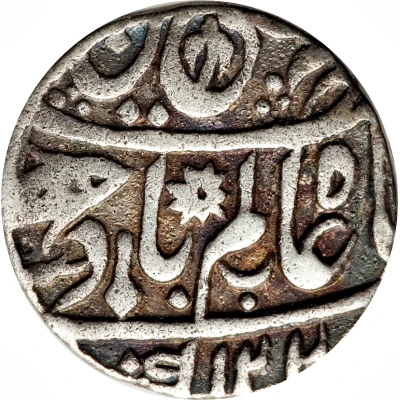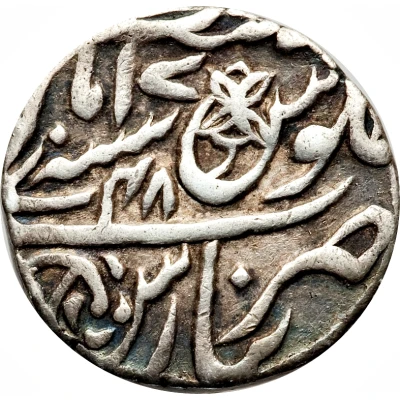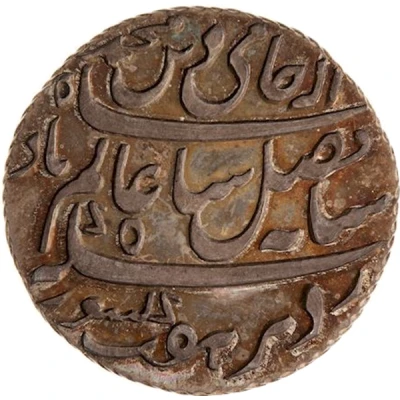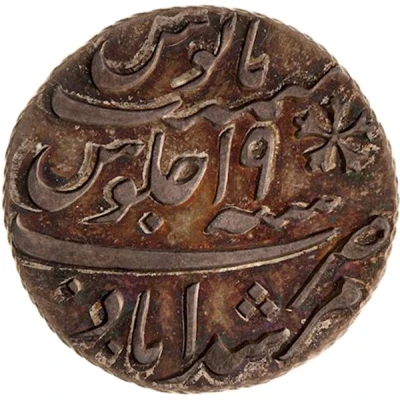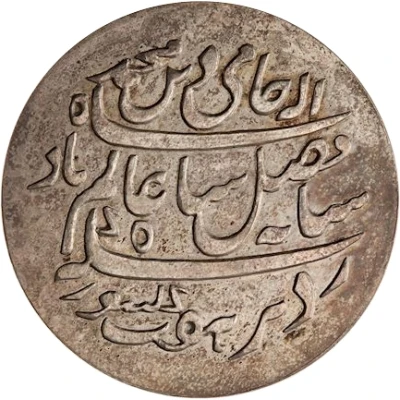
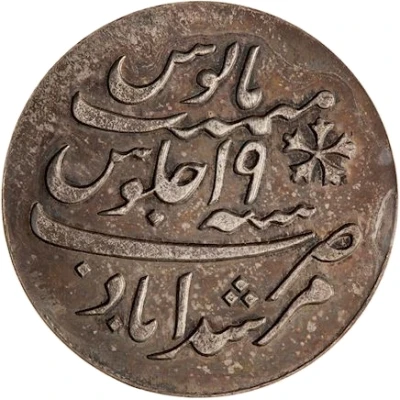

© Museum Victoria
½ Rupee - Shah Alam II Pattern ND
1793 year| Silver | 6.22 g | - |
| Issuer | Bengal Presidency (British India) |
|---|---|
| Type | Pattern |
| Year | 1793 |
| Value | ½ Rupee |
| Currency | Rupee (1765-1835) |
| Composition | Silver |
| Weight | 6.22 g |
| Shape | Round |
| Orientation | Medal alignment ↑↑ |
| Demonetized | Yes |
| Updated | 2024-10-05 |
| Numista | N#76427 |
|---|---|
| Rarity index | 100% |
Reverse
Legend in persian:Zarb Murshidabad sanat 19 julus maimanat manus.
Incomplete die, dots not added
Translation: Struck at Murshidabad in the 19th year of his reign of tranquil prosperity.
Edge
Plain
Comment
-Earlier attempts to control the monetary situation in Bengal by the permanent use of the 19th san failed because of the variety of other rupees in use in different parts of the Provinces of Bengal, Bihar and Orissa. On 1 May 1793 the Governor in Council passed Regulation XXXV which stipulated that only the Company's 19 san gold mohur, sicca rupee and their respective fractions would be used in this area.The key parts of the Regulation pertaining to coins were:
VII To guard, as far as possible, against counterfeiting, clipping, drilling, filing, defacing, or debasing the coin, the edges of both the gold and silver coin are to be milled, and the dies are to be made the same size as the coin, so that the whole of the impression may appear upon the surface of it.
VIII The nineteenth sun sicca rupees and nineteenth sun gold mohurs, and the halves and quarters of each, which may be coined at the mints established at Dacca, Patna, and Moorshedabad, and at the Calcutta mint, are to be precisely of the same shape, weight, and standard, and bear the same impression both on the surface and the edges; and with a view to the effectual attainment of the last-mentioned object, the dies for striking and milling the gold and silver coin are to be cut in the Calcutta mint, and distributed by the mint-Master to the three subordinate mints, and when these dies are broken or no longer serviceable, they are to be returned to the Calcutta mint.
X The Mint-Master is to cause a private mark to be put upon tall dies which may be prepared for the several mints, but in such a manner as not to be distinguishable by the naked eye. These marks are to be varied as often as the Mint-Master may judge proper upon new dies being made; and he is to keep a register of them, that in the event of any debased or defective coin being found in circulation, he may be able to ascertain from what mint it may have been issued.
Pridmore (p.264) suggests that this piece is an unfinished patterns for the new 1793 issue and could be for either the silver or gold denominations. It is a trial of unfinished dies with plain edge
Interesting fact
One interesting fact about the Pattern ½ Rupee - Shah Alam II (Pattern) ND (1793) from Bengal Presidency (British India) made of Silver weighing 6.22 g is that it was minted during a time of great change and upheaval in India. The coin was minted in 1793, just a few years after the British East India Company had established its rule over much of India, and it was during this time that the old Mughal Empire was being gradually dismantled and replaced by the British Raj. This coin, with its unique design and silver content, represents a fascinating moment in the history of Indian numismatics.
